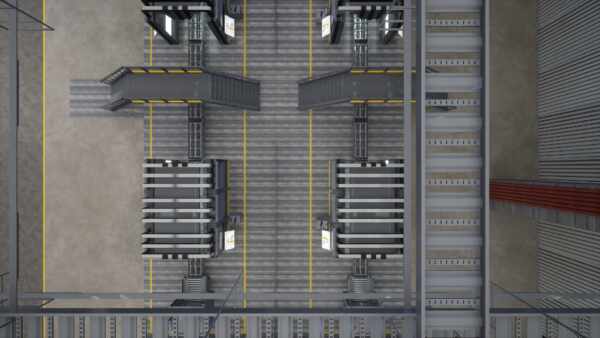Maintaining and optimising the performance of your conveyor belts is essential for ensuring the efficiency and reliability of your manufacturing operations. When properly maintained, conveyor belts can contribute to significant productivity gains, reduced downtime, and increased overall profitability for your business. However, with a diverse range of conveyor belt types, materials, and applications, navigating the world of conveyor belt maintenance can be challenging. That’s why we’ve created this comprehensive guide to conveyor belt maintenance, providing expert tips and best practices tailored to maximise the lifespan and performance of your belts, regardless of industry or application.
By understanding the best practices for conveyor belt maintenance, you can make informed decisions about the upkeep of your belts and take preventive measures to avoid potential problems. Following these expert tips can not only prolong the life of your belt but also ensure that your conveyor system is always running smoothly and efficiently, ultimately boosting productivity and driving the success of your manufacturing operations.
Whether you’re a seasoned conveyor belt user or new to the world of conveyor systems, our ultimate guide to conveyor belt maintenance offers a wealth of expertise, practical information, and industry insights that can help streamline your maintenance practices and maximise the value of your conveyor belts. So, join us as we explore the world of conveyor belt maintenance and discover how you can elevate your manufacturing operations to new heights of efficiency, reliability, and productivity.
1. Establishing a Conveyor Belt Maintenance Plan
Developing a tailored conveyor belt maintenance plan is the foundation of effective maintenance practices. It is essential to establish a systematic approach based on the specific needs of your business and take into account the unique characteristics of your conveyor system, such as belt type, material, and application. Key elements of a conveyor belt maintenance plan should include the following:
- Routine inspections: Schedule regular inspections and checks to detect and address any issues early on, ultimately preventing downtime.
- Proactive cleaning: Establishing a cleaning routine helps prevent the build-up of debris that can cause damage in the long term.
- Appropriate lubrication: Ensure proper lubrication of key moving parts to reduce wear and tear and keep your conveyor system running smoothly.
2. Conducting Visual Inspections and Preventive Maintenance
Regular visual inspections are crucial for identifying any potential issues in your conveyor belt system. Inspecting the belts and components for signs of wear, damage, or misalignment allows for early detection and remediation. Here are some key steps for visual inspection and preventive maintenance:
- Examine belt surfaces: Check for cracks, fraying, or any other visible signs of wear and tear that might indicate the need for repair or replacement.
- Assess belt tension: Proper tension is crucial to the performance of your conveyor belt system. Inspect your belts for slack or excessive tension to avoid premature wear or system failure.
- Check pulleys and rollers: Inspect the condition of the pulleys and rollers, ensuring they are in good shape and operating smoothly, making adjustments or replacements as necessary.
3. Addressing Common Conveyor Belt Issues
Being aware of common conveyor belt issues can help you troubleshoot and resolve issues effectively. Some of the most frequent problems encountered with conveyor belt systems include the following:
- Excessive noise: Unusual or excessive noise can indicate misaligned components, poor lubrication, or worn parts, requiring further investigation.
- Heat generation: Overheating components could lead to reduced performance and potential hazards. Identify and address the cause of excessive heat generation to maintain optimal conveyor belt function.
- Abnormal belt wear or alignment issues: Uneven wear or belt misalignment could suggest issues with pulleys, rollers, or other elements of your system. Address these issues early on to prevent costly damage or downtime.
4. Determining When to Repair or Replace Your Conveyor Belt
Making informed choices about repairing or replacing your conveyor belt system is critical for maintaining productivity and reducing costs. Consider the following factors when deciding between repair or replacement:
- Age and condition: Evaluate the overall condition and age of your conveyor belt. If it shows significant wear or has reached its expected lifespan, a replacement may be the better option.
- Frequency of repairs: If your conveyor belt system frequently needs repairs or adjustments, it may be more cost-effective to invest in a new belt with updated technology.
- Impact on productivity: Evaluate the potential downtime and impact on productivity resulting from repairs or replacement. In some cases, a complete replacement could minimise disruption and ensure optimal performance moving forward.
Conclusion
By implementing effective maintenance practices and following the guidelines outlined in our ultimate guide to conveyor belt maintenance, you can extend the life of your belts, enhance performance, and ultimately boost the productivity of your manufacturing operations. No matter your industry or conveyor belt type, a well-maintained system is crucial for success, enabling your business to adapt to evolving demands and maintain a competitive edge in 2024 and beyond.
As experts in conveyor belt maintenance and installation, Change Parts Pty Ltd can help you identify the most effective maintenance strategies and provide professional support to ensure your conveyor system is always running at its best. Get in touch with us today to learn more about our comprehensive range of services and products designed to maximise the reliability, efficiency, and longevity of your conveyor belts.




